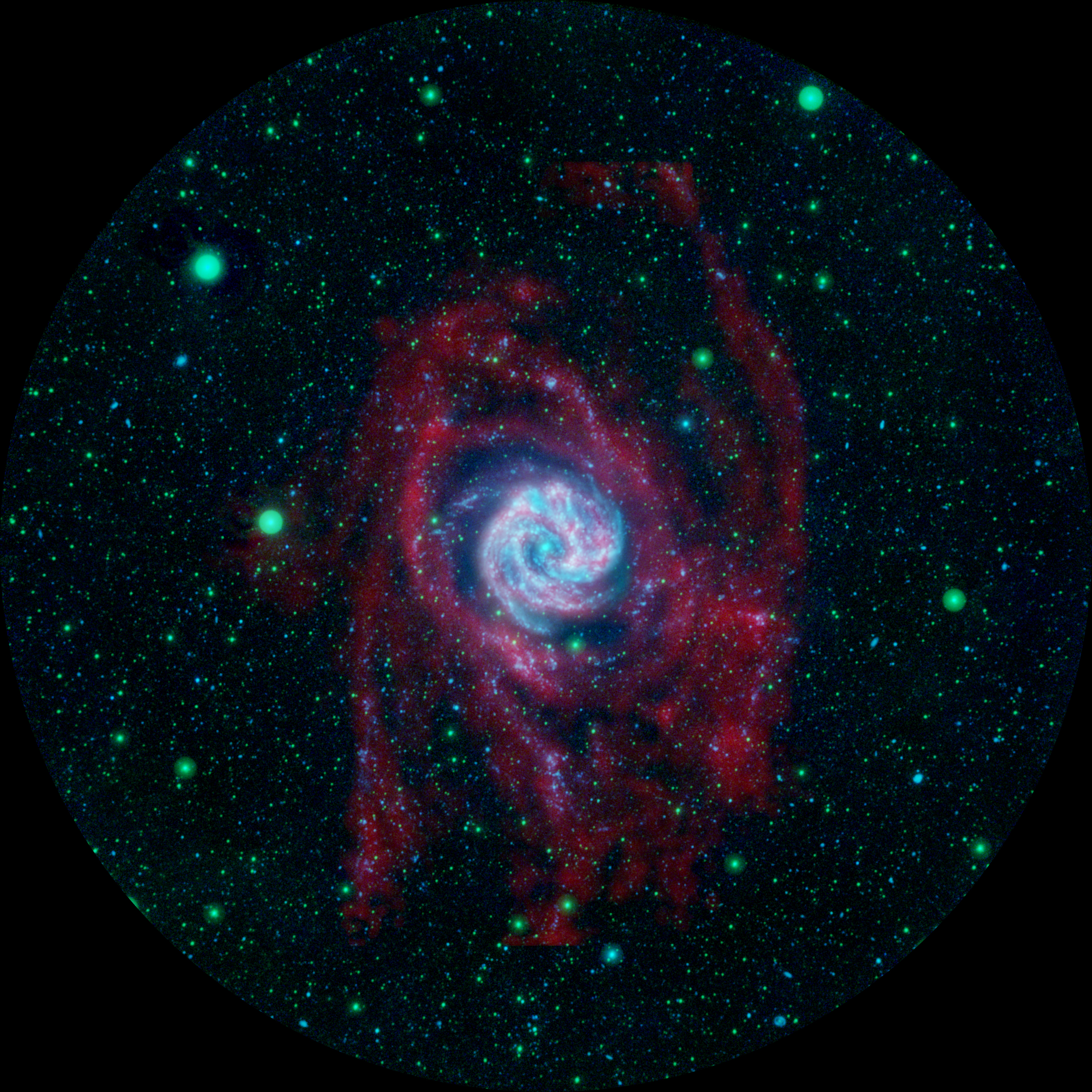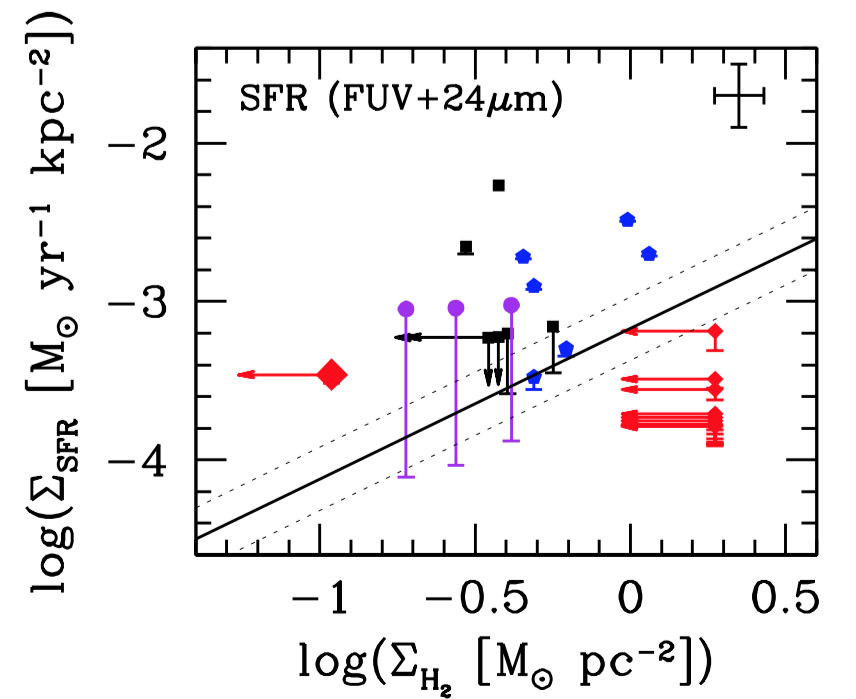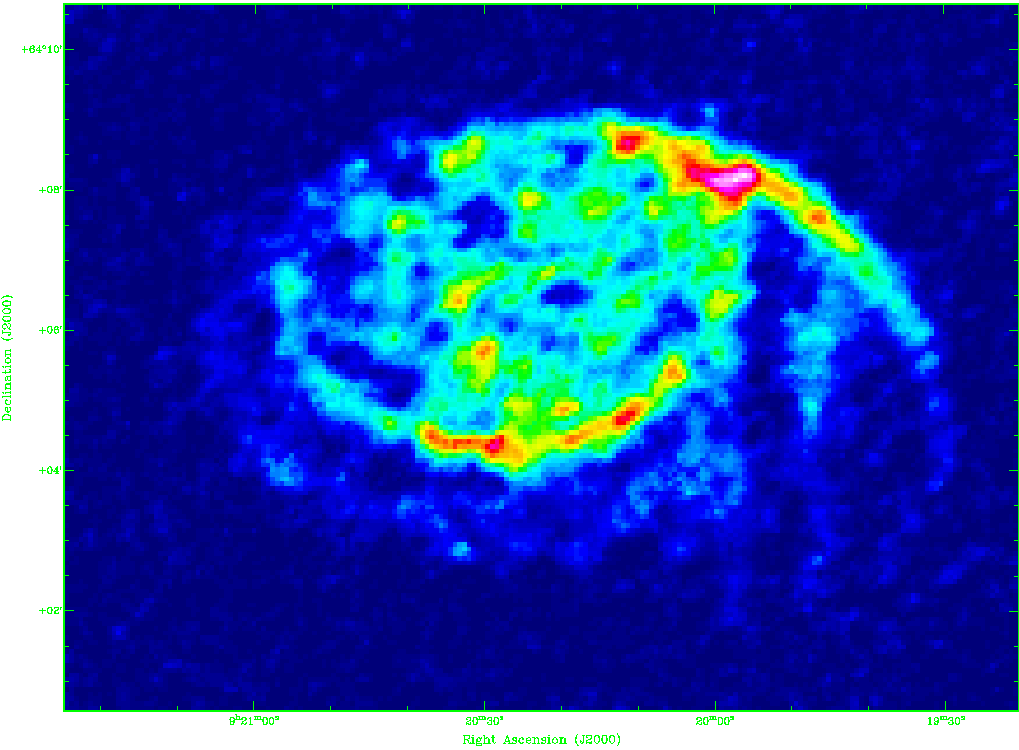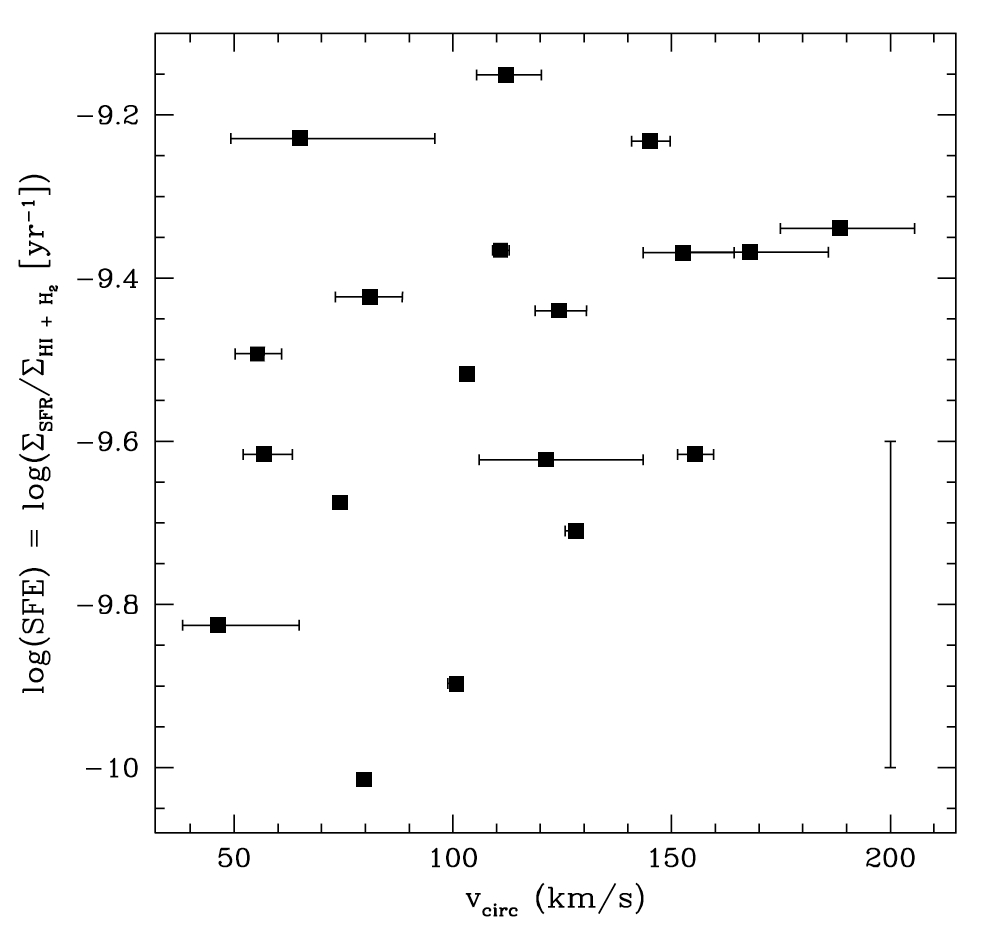The Connection between Molecular Gas and Star Formation in XUV Disks
Extended ultraviolet (XUV) emission beyond the optical radius is present in about 10% of galaxies out to z=0.05 (Lemonias et al. 2011). The image on the left shows M83 and it's spectacular XUV disk in FUV (blue), NUV (green), and 21 cm emission (red).
I want to figure out what causes these outer disks to light up in the UV. In Watson et al. (2016), we found that star forming regions in XUV disks (shown as colored points in the figure on the left) are in general consistent with the same molecular-hydrogen Kennicutt-Schmidt law that applies within the optical radius (solid line in the figure on the left). However, a number of the CO detections are significantly offset towards higher star formation rate surface density for their molecular hydrogen surface density, which may be due to evolutionary effects.
Star Formation as a Function of Stellar Mass in Bulgeless Disk Galaxies
In Watson et al. (2011) and Watson et al. (2012), we studied the connection between atomic gas, molecular gas, and star formation rate in a sample of 20 moderately inclined, bulgeless disk galaxies using CO(1-0) data from the IRAM 30m telescope, HI emission line data from the Very Large Array, Hα data from the MDM Observatory, and polycyclic aromatic hydrocarbon emission data derived from Spitzer Space Telescope observations. If you click on the image of NGC 2805 on the left, you'll be taken to a movie showing the HI emission from this galaxy as a function of frequency.
Previous work by Dalcanton et al. (2004) concluded that there is a transition in the vertical scale height of dust at a stellar mass of about 1010 M⊙. They hypothesized that low-mass galaxies have diffuse dust disks with large scale heights. In contrast, high-mass galaxies have small dust scale heights, which are apparent in optical images as narrow dust lanes.
We investigated whether the transition in dust scale height proposed by Dalcanton et al. (2004) leads to a transition in star formation efficiency. The figure on the left shows the star formation efficiency versus the circular velocity, where 120 km/s corresponds to a stellar mass of 1010 M⊙. We found no transition in star formation efficiency at any stellar mass. Our results are most consistent with models of star formation that include only physical processes on the scale of individual molecular clouds.
Here's a brief video that highlights the main results from Watson et al. (2012).
Other Projects
RESOLVE (PI: S. Kannappan) is a volume-limited survey of about 1600 galaxies with baryonic mass greater than 109 M⊙. The core dataset includes optical spectroscopy to measure metallicity, stellar population content, and gas or stellar kinematics. I helped process the HI data from the Green Bank Telescope for this project.
I am also interested in the link between supermassive black holes and the properties of their host galaxies. In Watson et al. (2008) and Grier et al. (2013), we studied the location of high-luminosity quasars on the M - σ relation, the correlation between the mass of the central black hole in a galaxy (M) and the stellar velocity dispersion of the host spheroid (σ). This work was also described in the December 2008 issue of Gemini Focus. In Watson et al. (2007), we investigated the locus of soft X-ray selected narrow-line Seyfert 1 galaxies on the M - σ relation.
As an undergraduate, I worked with Fred Hamann studying the connection between black holes and their host galaxies and with Ata Sarajedini on photometry of the open cluster M67. I also spent a summer at the Harvard-Smithsonian Center for Astrophysics working with Margarita Karovska on potential Cepheid studies that could be carried out with the Stellar Imager.
 Image credit: NASA/JPL-Caltech/VLA/MPIA.
Image credit: NASA/JPL-Caltech/VLA/MPIA.


